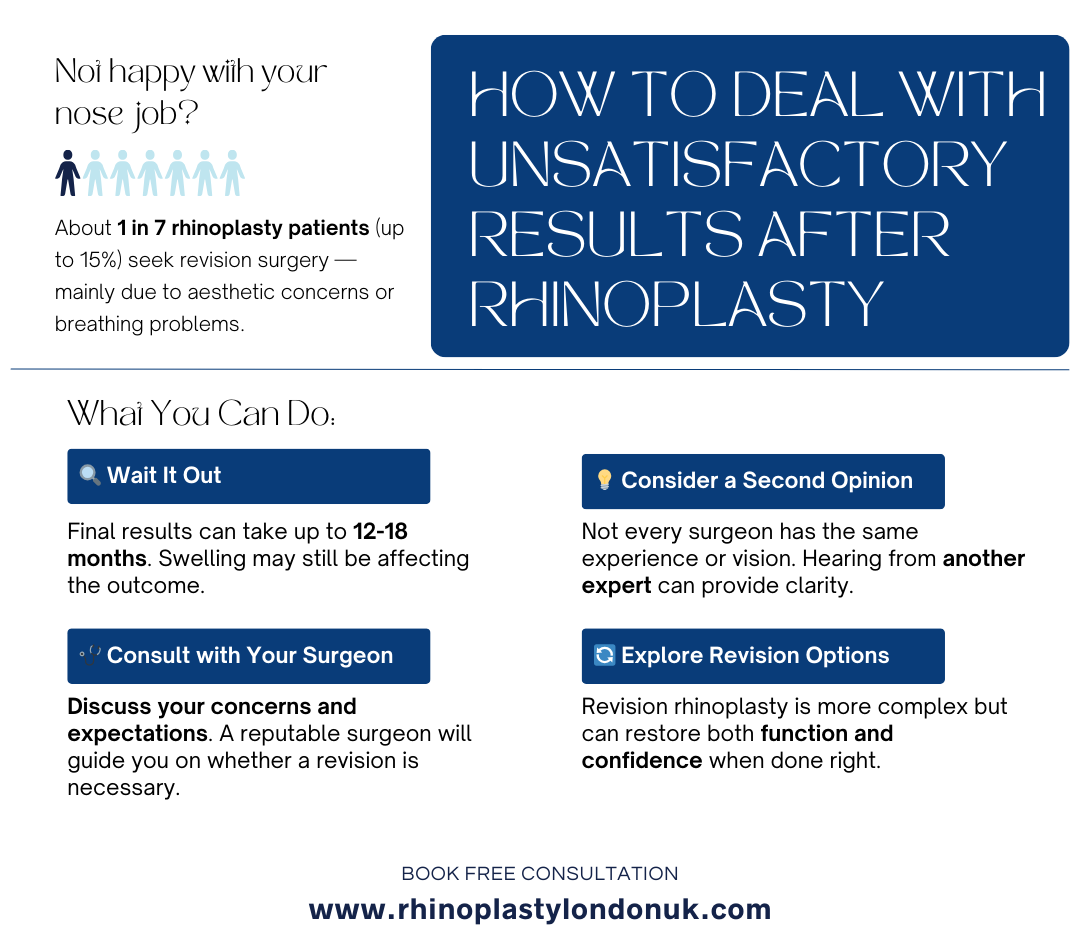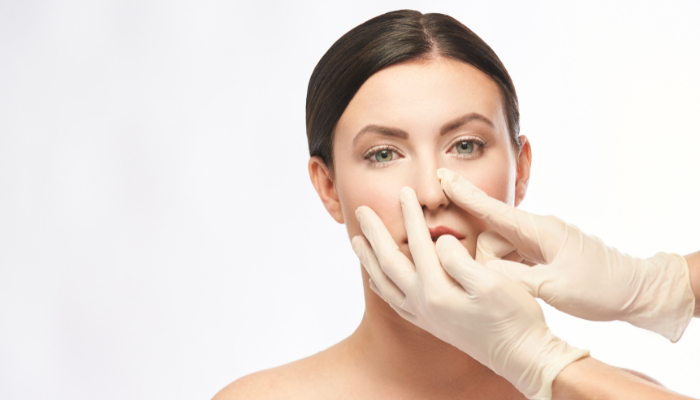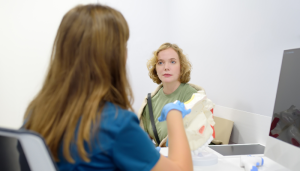When it comes to changing the shape of your nose, the focus is usually on the end result—but what about the steps (and possible setbacks) along the way?
Rhinoplasty is one of the most common cosmetic surgeries, yet many people are surprised to learn about the risks involved until they’re already in the process. From breathing difficulties to unexpected scarring, there are important things to consider before you commit.
This post walks you through the top 10 rhinoplasty risks in a clear, approachable way—no scare tactics, just the facts you’ll want to know before making any big decisions.
Key Takeaways
- Rhinoplasty can lead to breathing difficulties post-surgery.
- Scarring is a common concern, though often minimal.
- Infections can occur, requiring careful monitoring.
- Results may not meet expectations, leading to dissatisfaction.
- Recovery can include swelling and bruising that may last for weeks.
1. Breathing Difficulties

After rhinoplasty, some people find that their breathing isn’t quite as smooth as it used to be. Now, this isn’t always the case, and for many, it’s a temporary thing while everything settles down. But it’s definitely something you need to be aware of before you go under the knife.
Sometimes, the surgery itself can cause some internal swelling or changes to the nasal passages that make it harder to breathe properly. Other times, pre-existing conditions like a deviated septum (which, let’s be honest, loads of us have without even knowing) can be made worse, or only become apparent, after the procedure. The good news is that most breathing issues can be corrected.
If you’re already a bit stuffy or have any known nasal issues, make sure you have a really good chat with your surgeon about it beforehand. They can assess your nose and come up with a plan to minimise the risk of breathing problems. They might even be able to fix any existing issues at the same time as doing the cosmetic work. Two birds, one stone, eh?
Here’s a few things to keep in mind:
- Be open with your surgeon: Tell them about any breathing problems you’ve had in the past.
- Follow post-op instructions: Sticking to the aftercare plan can really help reduce swelling and speed up healing.
- Don’t panic: If you do have trouble breathing, don’t automatically assume the worst. Talk to your surgeon, and they’ll be able to advise you on the best course of action.
2. Scarring
It’s probably one of the first things people worry about, and rightly so. No one wants a visible reminder of their surgery, do they? The good news is that with modern techniques, visible scarring is becoming less and less of a concern.
Most rhinoplasty procedures are performed using a ‘closed’ technique, where all the incisions are made inside the nose. This means no visible external scars. However, sometimes an ‘open’ rhinoplasty is necessary, particularly for more complex cases. This involves a small incision across the columella (the bit between your nostrils).
Even with an open rhinoplasty, the resulting scar is usually minimal and fades significantly over time. I know it’s easier said than done, but try not to stress too much about it. Your surgeon will take every precaution to minimise scarring, and there are things you can do to help the healing process too.
After the surgery, following your surgeon’s aftercare instructions is super important. This includes keeping the area clean, avoiding sun exposure, and using any prescribed creams or ointments. These steps can really make a difference in how your scar heals.
Here are a few things that can influence scarring:
- Surgical technique: Closed vs. Open rhinoplasty.
- Skin type: Some skin types are more prone to scarring.
- Aftercare: Following your surgeon’s instructions diligently.
- Individual healing ability: Everyone heals differently.
If you’re concerned about scarring, have an open and honest chat with your surgeon. They can assess your individual risk factors and discuss the best approach to minimise any potential scarring. Honestly, it’s all about being informed and proactive. You’ve got this!
3. Infection
Okay, so infection after rhinoplasty isn’t super common, but it’s definitely something to be aware of. Basically, any surgery carries a risk of infection, and a nose job is no different. It’s usually caused by bacteria getting into the surgical site. The good news is that with proper care and quick action, it’s usually manageable.
What does it look like? Well, you might notice increased redness, swelling that’s way worse than it should be, pain that’s not getting better, or even some pus or discharge. If you see any of that, don’t wait – get in touch with your surgeon ASAP. They’ll probably prescribe antibiotics to clear things up. Keeping the area clean is also really important.
Your surgeon will give you specific instructions, but generally, gentle cleaning with saline solution is a good idea. Just be super careful and follow their advice to the letter. It’s all about nipping it in the bud before it becomes a bigger issue.
4. Anaesthesia Risks
Anaesthesia is generally safe, but it’s important to be aware of potential risks. It’s not something to lose sleep over, but definitely something to discuss openly with your surgeon and anaesthetist. They’ll assess your medical history and explain everything clearly. Your safety is their top priority.
It’s worth remembering that serious complications from anaesthesia are rare. Modern techniques and monitoring have made it much safer than it used to be.
Here’s a quick rundown of what you should know:
- Allergic Reactions: These are uncommon but can happen. The team is trained to handle them.
- Breathing Problems: Sometimes, you might need help with breathing during or immediately after the procedure. This is usually temporary.
- Nausea and Vomiting: Feeling a bit queasy after waking up is fairly common, but there are medications to help manage it.
- Awareness Under Anaesthesia: This is extremely rare, but it’s when you become aware during surgery. Anaesthetists take precautions to prevent this.
Don’t hesitate to ask your anaesthetist any questions you have. Seriously, any questions. They’re there to put your mind at ease and make sure you’re comfortable with the plan.
5. Unsatisfactory Results
Sometimes things don’t go exactly as planned, even with the best surgeons. Unsatisfactory results are a risk, but it’s important to understand what that could mean and what can be done about it. It’s not about assigning blame; it’s about finding solutions and achieving the outcome you hoped for.
Open communication with your surgeon is key to addressing any concerns.
It’s worth remembering that everyone’s perception of beauty is different. What you see as a minor imperfection, your surgeon might view as a successful outcome. Make sure you’re both on the same page from the start.

Here are a few things to keep in mind:
- Realistic Expectations: Discuss your desired outcome in detail with your surgeon. Use photos and models to illustrate what you’re hoping to achieve. Be open to their professional opinion on what’s realistically possible with your nasal structure.
- Revision Surgery: If you’re truly unhappy with the results, revision surgery might be an option. However, it’s generally recommended to wait at least a year to allow the nose to fully heal before considering further procedures.
- Psychological Impact: Don’t underestimate the emotional toll of an unsatisfactory result. If you’re struggling with feelings of disappointment or anxiety, seek support from a therapist or counsellor.
6. Swelling and Bruising
Swelling and bruising are pretty much guaranteed after rhinoplasty. It’s just part of the healing process, like rain after you’ve washed the car. The extent varies from person to person, but it’s something everyone experiences to some degree.
It’s usually at its peak around 2-3 days post-op, and then it gradually starts to subside. Here’s what you can expect and how to manage it:
- Cold Compresses: Applying cold compresses can really help reduce swelling and ease the discomfort. Think of it like icing a sprained ancle – same principle.
- Head Elevation: Sleeping with your head elevated (propped up on a couple of pillows) helps drain fluid away from your face. It’s not the comfiest position, but it makes a difference.
- Arnica: Some people swear by arnica, a natural remedy that’s supposed to help with bruising. It’s worth a shot, but chat with your surgeon first.
Don’t panic if you look like you’ve gone a round with a boxer. It’s temporary! Just follow your surgeon’s instructions, be patient, and you’ll see improvement day by day. It’s all part of the journey to your new nose.
7. Nosebleeds
Right, so nosebleeds after a rhinoplasty. It’s not exactly a fun topic, but it’s something you should be aware of. I mean, who enjoys a nosebleed? It’s fairly common in the initial days following surgery.
Generally, they’re manageable and not a sign of anything seriously wrong, but it’s still good to know what to expect and how to handle them. Think of it as being prepared, not scared. Most of the time, they’re just a bit of a nuisance, but let’s get into the details so you’re totally clued up.
8. Altered Sense of Smell
The idea that your sense of smell could change after any types of nose jobs is definitely something to consider. It’s not super common, but it can happen. Basically, the olfactory nerves are pretty delicate, and any surgery around the nose area has the potential to mess with them a bit.
It’s usually temporary, thankfully. Most people find their sense of smell returns to normal as the swelling goes down and everything settles. But, there’s always a small chance of a more permanent change. It could be a reduction in your ability to smell things, or, in rare cases, a slightly different perception of certain scents.
If you’re a foodie or someone who really values their sense of smell, it’s worth having a good chat with your surgeon about this risk. They can explain the techniques they use to minimise any potential impact on your olfactory nerves.
Here’s what you can do to help things along:
- Follow your surgeon’s aftercare instructions to the letter.
- Avoid anything that might irritate your nose, like strong perfumes or smoke.
- Be patient – it can take a few months for everything to fully heal and for your sense of smell to return to normal.
9. Revision Surgery

Let’s be real, no one plans on needing a second nose job. But sometimes, despite everyone’s best efforts, the initial rhinoplasty doesn’t quite deliver the desired outcome. Maybe it’s a minor tweak, or perhaps it’s a more significant adjustment needed to address both aesthetics and function. Revision rhinoplasty is a procedure performed to correct or improve the results of a previous nose surgery.
It’s more common than you might think, and it’s all about getting you to where you want to be. It’s important to remember that seeking a revision doesn’t mean the first surgeon did a bad job; sometimes, the body heals in unexpected ways, or your aesthetic goals evolve over time.
If you’re considering revision surgery, it’s vital to have realistic expectations and to choose a surgeon with extensive experience in this area. Revision cases can be more complex than primary rhinoplasties, so you want someone who really knows their stuff.
Here are a few things to keep in mind:
- Timing is key: It’s generally recommended to wait at least a year after your initial surgery before considering a revision. This allows the tissues to fully heal and the final results to become apparent.
- Find a specialist: Look for a surgeon who specialises in revision rhinoplasty. They’ll have the expertise to assess the issues and develop a tailored plan.
- Open communication: Be clear about what you hope to achieve with the revision. Discuss your concerns and expectations openly with your surgeon.
10. Emotional Impact
It’s easy to focus on the physical changes after a rhinoplasty, but let’s not forget the emotional side of things. This surgery can have a real impact on how you feel about yourself. It’s not just about a new nose; it’s about your self-image and confidence.
It’s normal to have a mix of feelings. You might be thrilled with the results, but also a bit anxious or down at times. It’s a big change, and it takes time to adjust.
Don’t be afraid to reach out for support. Talk to your surgeon, a therapist, or even just a trusted friend or family member. It’s important to have people around you who understand what you’re going through. Remember, taking care of your mental health is just as important as taking care of your physical health during this process.
Here are a few things to keep in mind:
- Be patient with yourself. It takes time to get used to your new look.
- Focus on the positive aspects of the change.
- Don’t compare yourself to others. Everyone’s journey is different.
Conclusion
Understanding the risks of rhinoplasty isn’t about creating fear—it’s about protecting your safety, building your confidence, and making sure you’re truly ready for what comes next. By knowing what to watch for, you can ask smarter questions, choose the right surgeon, and set more realistic expectations.
If you’re seriously considering surgery, take the time to do your homework. Talk openly with a qualified expert, explore multiple opinions, and don’t rush the process. The more informed you are, the more empowered you’ll feel—because the best results come from confident, well-prepared decisions.
Frequently Asked Questions
What are the main risks of rhinoplasty?
Some common risks include breathing problems, scarring, and infections.
Can rhinoplasty affect my sense of smell?
Yes, some people may notice a change in their sense of smell after surgery.
How long does recovery take after rhinoplasty?
Recovery can vary, but most people start to feel better within a few weeks.
Will I have noticeable scars after the surgery?
Scarring is possible, but good surgeons try to make incisions in hidden areas.
What if I don’t like the results of my rhinoplasty?
If you are unhappy with the results, you may need revision surgery to fix it.
Is rhinoplasty safe?
While generally safe, all surgeries come with risks. It’s important to discuss these with your doctor.





